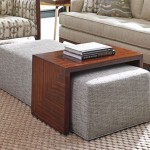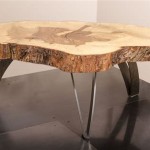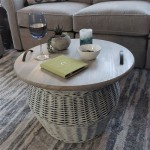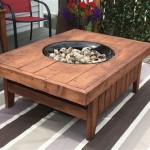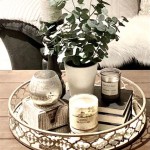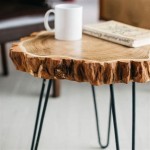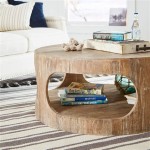Modern Round Dining Table Ideas: A Comprehensive Guide
The modern dining room represents a significant space within a home, functioning as a central hub for family gatherings, social events, and everyday meals. The dining table is the focal point of this room, and selecting the right one is crucial for establishing the desired ambiance and functionality. Round dining tables, in particular, offer unique advantages in terms of space utilization, social interaction, and aesthetic appeal. This article explores various modern round dining table ideas, examining different styles, materials, and design considerations to assist in making an informed decision.
Space Efficiency and Social Dynamics
One of the primary benefits of a round dining table is its space-saving design. In smaller dining rooms or apartments, the absence of sharp corners allows for easier navigation and a more open feel. Round tables tend to occupy less visual space, contributing to a less cluttered and more inviting environment. This is particularly advantageous when dealing with limited square footage.
Beyond spatial advantages, round tables promote a more inclusive and intimate dining experience. The circular shape eliminates the hierarchical structure often associated with rectangular tables, where individuals seated at the head of the table may dominate the conversation. A round table encourages equal participation, facilitating eye contact and fostering a sense of connection among diners. This makes it ideal for family dinners, game nights, or casual gatherings where open communication is desired.
Furthermore, round tables are generally considered safer, especially in households with small children. The absence of sharp corners reduces the risk of accidental bumps and injuries, providing a safer environment for active children. This practical consideration adds to the appeal of round tables for families.
Material Selection and Aesthetic Considerations
The choice of materials for a modern round dining table significantly impacts its overall aesthetic and durability. Common materials include wood, glass, metal, and stone, each offering distinct advantages and disadvantages.
Wood: Wood is a classic and versatile material that complements a wide range of interior design styles. Solid wood tables offer exceptional durability and a timeless appeal. Different wood species, such as oak, walnut, maple, and cherry, provide varying textures, colors, and grain patterns, allowing for customization to match existing décor. Wood veneer tables, constructed with a thin layer of hardwood over a less expensive substrate, offer a more budget-friendly alternative while still retaining the appearance of solid wood. Wood tables can be stained, painted, or left with a natural finish to achieve the desired look. The warmth and natural beauty of wood make it a popular choice for creating a welcoming and comfortable dining space.
Glass: Glass-top dining tables offer a sleek and contemporary aesthetic. The transparency of glass creates a sense of openness and lightness, making it an excellent choice for smaller spaces or rooms with limited natural light. Glass tables can be paired with various base materials, such as metal, wood, or acrylic, to create a unique and visually appealing design. Tempered glass is essential for safety, as it is significantly stronger and more resistant to shattering than ordinary glass. While glass tables are relatively easy to clean, they can be prone to fingerprints and smudges, requiring frequent maintenance to maintain their pristine appearance. The minimalist aesthetic of glass tables complements modern and contemporary design styles.
Metal: Metal dining tables offer a modern and industrial aesthetic. Metal bases can be paired with various tabletop materials, such as wood, glass, or stone, to create a diverse range of styles. Stainless steel, wrought iron, and powder-coated metal are common choices for dining table bases, each offering distinct advantages in terms of durability and corrosion resistance. Metal tables are generally easy to clean and maintain, making them a practical choice for busy households. The clean lines and industrial appeal of metal tables make them a popular choice for contemporary lofts, apartments, and modern homes.
Stone: Stone dining tables, such as marble or granite, offer a luxurious and sophisticated aesthetic. These materials are renowned for their durability, heat resistance, and unique veining patterns. Stone tables are typically heavy and require a sturdy base to support their weight. Marble tables, in particular, require careful maintenance to prevent staining and etching from acidic substances. Granite tables are more resistant to stains and scratches, making them a more practical choice for everyday use. The natural beauty and timeless elegance of stone tables make them a statement piece in any dining room.
Design Styles and Considerations
Numerous design styles can be incorporated into modern round dining tables, ranging from minimalist and contemporary to rustic and industrial. The choice of design style should complement the overall aesthetic of the dining room and reflect the homeowner's personal preferences.
Minimalist: Minimalist round dining tables emphasize clean lines, simplicity, and functionality. These tables often feature a simple, uncluttered design with a neutral color palette. Common materials include light wood, glass, and metal. The focus is on creating a serene and uncluttered dining space. Minimalist tables are often paired with simple chairs and minimal accessories to maintain the overall aesthetic.
Contemporary: Contemporary round dining tables embrace modern trends and innovative designs. These tables may feature asymmetrical shapes, bold colors, and mixed materials. The focus is on creating a stylish and visually appealing dining space. Contemporary tables are often paired with sculptural chairs and modern lighting fixtures to enhance the overall design.
Rustic: Rustic round dining tables emphasize natural materials, textures, and imperfections. These tables often feature reclaimed wood, distressed finishes, and handcrafted details. The focus is on creating a warm and inviting dining space. Rustic tables are often paired with farmhouse-style chairs and vintage accessories to enhance the overall aesthetic. The natural beauty and character of rustic tables add a touch of warmth and charm to any dining room.
Industrial: Industrial round dining tables emphasize raw materials, exposed hardware, and functional design. These tables often feature metal frames, wooden tops, and vintage-inspired details. The focus is on creating a utilitarian and stylish dining space. Industrial tables are often paired with metal chairs, exposed brick walls, and vintage lighting fixtures to enhance the overall aesthetic. The rugged and functional design of industrial tables adds a touch of urban chic to any dining room.
In addition to design styles, several other considerations should be taken into account when selecting a modern round dining table. These include the size of the table, the number of chairs needed, and the overall layout of the dining room.
The size of the table should be proportionate to the size of the dining room. A table that is too large will overwhelm the space, while a table that is too small will not be functional. The number of chairs needed will depend on the size of the family and the frequency of entertaining guests. It is important to ensure that there is enough space around the table for diners to move comfortably. The overall layout of the dining room should be considered when selecting a table. The table should be positioned in a way that allows for easy access to other areas of the room, such as the kitchen or living room.
Lighting plays a crucial role in enhancing the ambiance of the dining area. A well-placed chandelier or pendant light above the round dining table can draw attention to the focal point and create a warm, inviting atmosphere. Consider the style of the lighting fixture to complement the design of the table and the overall décor of the room. Dimmable lighting options allow for adjusting the brightness to suit different occasions, from intimate dinners to lively gatherings.
Area rugs can also contribute to the overall aesthetic and functionality of the dining space. A rug placed beneath the round dining table can help to define the area, add warmth and texture, and protect the flooring from scratches and spills. Choose a rug that is large enough to accommodate all the chairs when they are pulled out from the table. The color and pattern of the rug should complement the design of the table and the overall décor of the room.
Accessories can be used to personalize the dining space and add character to the round dining table setting. A centerpiece, such as a vase of flowers, a candle arrangement, or a decorative bowl, can add visual interest and create a focal point on the table. Placemats, napkins, and tableware should be chosen to complement the design of the table and the overall décor of the room. Artwork and wall décor can also be used to enhance the ambiance of the dining area and create a cohesive and stylish look.

Modern Home Decor Ideas For This Summer Round Dining Room Table Tables Unique

10 Awesome Modern Dining Table Ideas That You Will Adore Tables Room Decor Glass

51 Round Dining Tables That Save On Space But Never Skimp Style

Dining Room Design Ideas With Round Tables Dkor Interiors

19 Round Dining Tables That Make A Statement Architectural Digest

32 Fabulous Contemporary Dining Room Decorating Ideas Homyhomee Round Table Design

80 Best Dining Room Ideas And Decorating Tips

5 Modern Dining Room Decor Ideas Jetclass

9 Round Dining Table Designs For Home Designcafe

Modern Dining Room Ideas And Trends For 2024 Jane At Home
Related Posts

